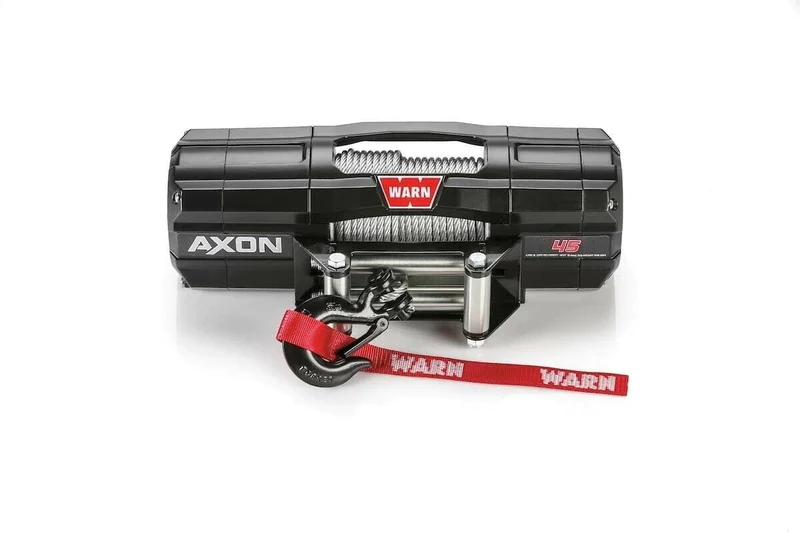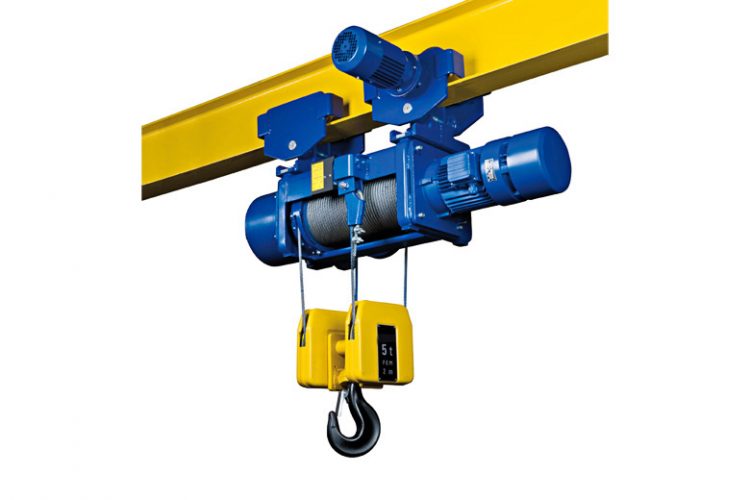When it comes to lifting or pulling heavy loads, the equipment you choose can make all the difference.
That’s why understanding the distinct capabilities and applications of winches and hoists is crucial.
Both tools are indispensable in various industries, yet they serve different purposes and are designed for specific tasks.
This article aims to shed light on the differences between winches and hoists, helping you make an informed decision for safe and efficient lifting operations.
What is a Winch?

A winch is a mechanical device used for pulling or winding up. It operates on a simple mechanism where a rope or cable is wound around a drum, and as the drum rotates, it pulls the object towards it.
Winches come in three main types: manual, electric, and hydraulic.
Manual winches are powered by hand, electric winches use electric motors, and hydraulic winches are powered by hydraulic systems.
They are commonly used in construction sites, marine environments, and automotive applications for tasks like towing vehicles, anchoring ships, or pulling heavy equipment.
What is a Hoist?

On the other hand, a hoist is a device designed for lifting or lowering a load. The basic mechanism involves a drum or lift-wheel where a rope or chain wraps around.
Hoists are categorized into chain, wire rope, and lever types, each serving different lifting needs.
Chain hoists use a chain loop to lift, wire rope hoists utilize a cable, and lever hoists are operated by a lever.
Hoists are vital in manufacturing, warehousing, and construction sectors for material handling, equipment lifting, and maintenance tasks.
Key Differences Between Winches and Hoists
Understanding the key differences between winches and hoists is crucial for anyone involved in lifting or pulling heavy loads, as these differences directly impact their suitability for various tasks. Let’s delve deeper into each of these distinctions:
Lifting Capacity
- Hoists: These devices are specifically designed to lift heavy loads vertically. Thanks to their robust design and lifting mechanism, hoists can handle very heavy weights, often ranging from a few hundred to several thousand pounds. This makes them the go-to choice for industrial applications where heavy lifting is a daily requirement, such as in manufacturing plants or construction sites.
- Winches: While winches are incredibly useful for pulling loads horizontally or at a slight angle, their lifting capacity is generally lower than that of hoists. Winches excel in applications where the primary need is to pull or tow rather than lift. This doesn’t mean winches are weak; rather, they are optimized for tasks like towing vehicles, pulling cables, or anchoring boats, where the load might not be directly vertical or as heavy as those typically handled by hoists.
Portability and Mobility
- Winches: One of the key advantages of winches is their portability. Many winches are designed to be easily mounted on vehicles, boats, or trailers, making them ideal for on-the-go applications such as recovery operations or fieldwork. This mobility allows winches to be used in a variety of settings, far beyond the confines of industrial environments.
- Hoists: Hoists, particularly those used in industrial settings, are often installed in a fixed location, such as on a beam or a gantry. This stationary setup is conducive to repetitive lifting tasks in a controlled environment, where loads need to be moved vertically with precision. The installation of hoists is a commitment to a specific workspace design, emphasizing their role in structured, repetitive lifting tasks.
Power Source
Both winches and hoists can be powered manually, electrically, or hydraulically. The choice of power source affects the device’s ease of use, efficiency, and suitability for certain environments:
- Manual: Ideal for smaller loads and where electrical or hydraulic power is not available. Manual operation requires physical effort, making it less suitable for heavy or frequent lifting.
- Electric: Provides a good balance of power and ease of use, suitable for a wide range of applications. Electric models are popular in both winches and hoists for their versatility and moderate lifting capacity.
- Hydraulic: Offers the highest power and durability, ideal for heavy-duty applications in harsh environments. Hydraulic winches and hoists are commonly used in industrial, marine, and construction settings, where their robust performance can be fully utilized.
Speed and Precision
- Hoists: Designed for precision, hoists can lift loads with a high degree of control, making them indispensable in settings where the exact placement of a load is critical. This precision is particularly important in manufacturing and assembly operations, where materials must be positioned carefully.
- Winches: While winches can efficiently pull loads, their control and precision, especially in vertical lifting, are not as refined as those of hoists. Winches are best suited for applications where speed and the ability to cover distance are more critical than precise positioning.
Safety Features and Regulations
Given their primary role in lifting operations, hoists are subject to more stringent safety features and regulatory standards.
These may include overload protection, emergency stop features, and regular inspection requirements.
The emphasis on safety reflects the potential risk associated with lifting heavy loads vertically, where the consequence of failure can be more severe.
Winches, while also subject to safety considerations, typically face less rigorous standards than hoists. The focus is on ensuring the winch is suitable for the intended pulling task and that it is operated within its capacity limits to prevent cable or mechanism failure.
Factors to Consider When Choosing Between a Winch and a Hoist
When choosing between a winch and a hoist, understanding the nuances of your task and environment is key to selecting the equipment that will best meet your needs. Let’s break down each factor to consider in more detail:
Load Weight and Size
- Winches and Hoists: Both are designed to move heavy objects, but their capacity to handle weight and size varies significantly. It’s vital to know the maximum weight of the loads you intend to lift or pull. Hoists are typically preferred for very heavy lifting in industrial settings due to their robust design, whereas winches are ideal for pulling or lifting lighter loads across various environments. Overloading equipment can lead to failure and accidents, so choosing a device with the appropriate capacity is crucial.
Lifting Height and Distance
- Consideration for Hoists: If the task involves lifting objects to a significant height, hoists are generally more suitable because they are specifically designed for vertical lifting with safety and stability in mind.
- Consideration for Winches: For tasks requiring the horizontal pulling of a load over a distance or at a slight incline, winches are more appropriate. They are engineered for such tasks, offering the flexibility to pull loads across flat surfaces or from one point to another.
Operational Environment
- Indoor vs. Outdoor Use: The environment in which the equipment will be used greatly influences the choice. For indoor operations, such as in warehouses or manufacturing plants, electric hoists are commonly used due to their clean operation and lack of exhaust fumes. For outdoor applications, especially in remote areas, hydraulic or manual winches might be preferred for their durability and independence from power sources.
- Harsh Conditions: In environments with harsh conditions, such as marine applications, equipment with high resistance to water, dust, and corrosion is essential. Hydraulic winches and hoists are often chosen for these settings due to their robustness and ability to operate in various weather conditions.
Frequency of Use
- Regular Use: If the equipment will be used frequently, investing in a high-quality, durable hoist or winch that can withstand repeated use is wise. Electric and hydraulic models are suitable for frequent use, offering the endurance needed for consistent operation.
- Occasional Use: For less frequent applications, a manual winch or hoist might be sufficient and more cost-effective. These devices require more physical effort but are less expensive and simpler to maintain for occasional tasks.
Budget and Cost Considerations
- Initial Investment vs. Long-Term Value: The cost of winches and hoists can vary widely based on their type, capacity, and features. While budget constraints are a real consideration, it’s also important to think about the long-term value of the investment. An initially cheaper option might cost more over time if it requires frequent repairs or replacement. Conversely, spending more upfront on a durable, efficient model can save money and increase safety in the long run.
- Operational Costs: Electric and hydraulic models may have higher initial costs but offer efficiencies that can reduce operational expenses over time, such as lower labor costs and faster completion of tasks. Manual models, while cheaper, might lead to higher long-term costs due to slower operation times and increased labor.
Also read: Winch vs Pulley
Conclusion
Understanding the differences between winches and hoists is key to selecting the right tool for your lifting and pulling needs.
By considering the specific applications, safety features, and operational requirements, you can ensure efficient and safe operations.
Whether you’re working in construction, manufacturing, or any field requiring heavy lifting, investing time in research and consulting professionals will pay off in choosing the best equipment for the job.

